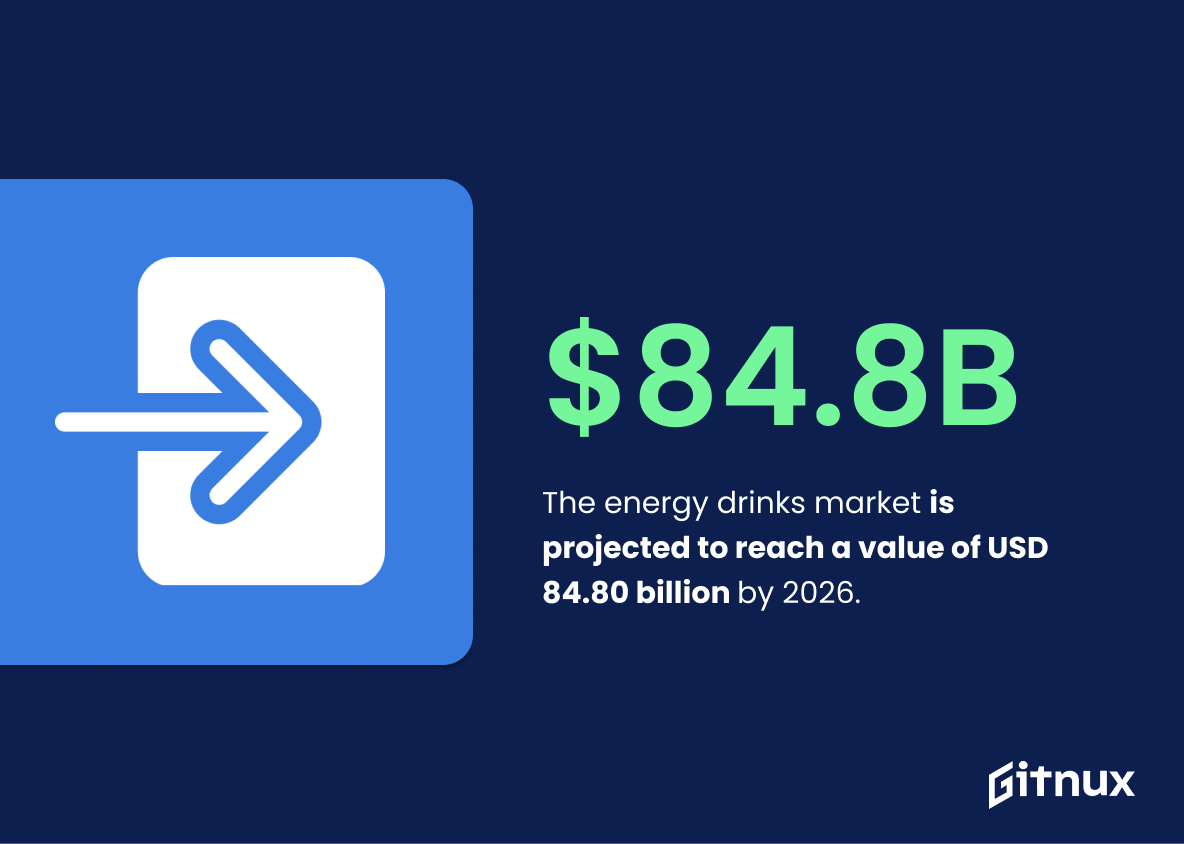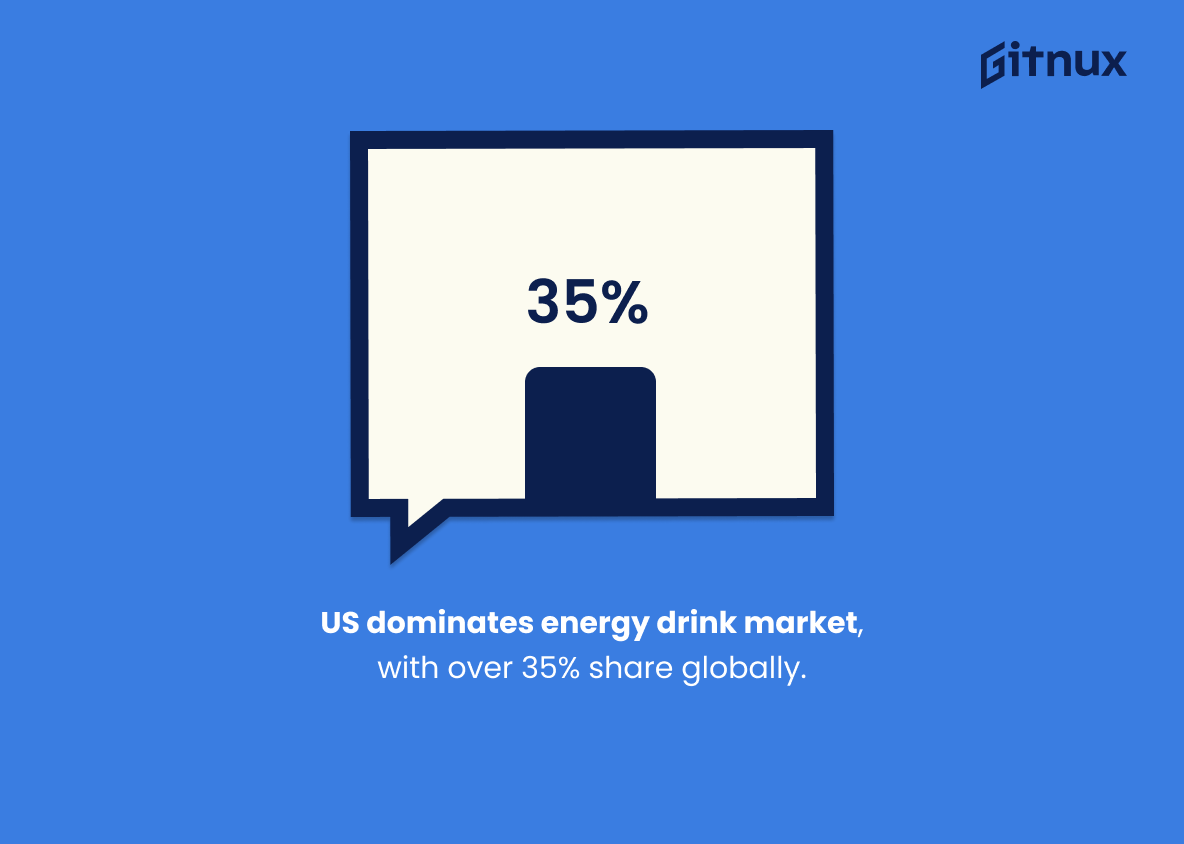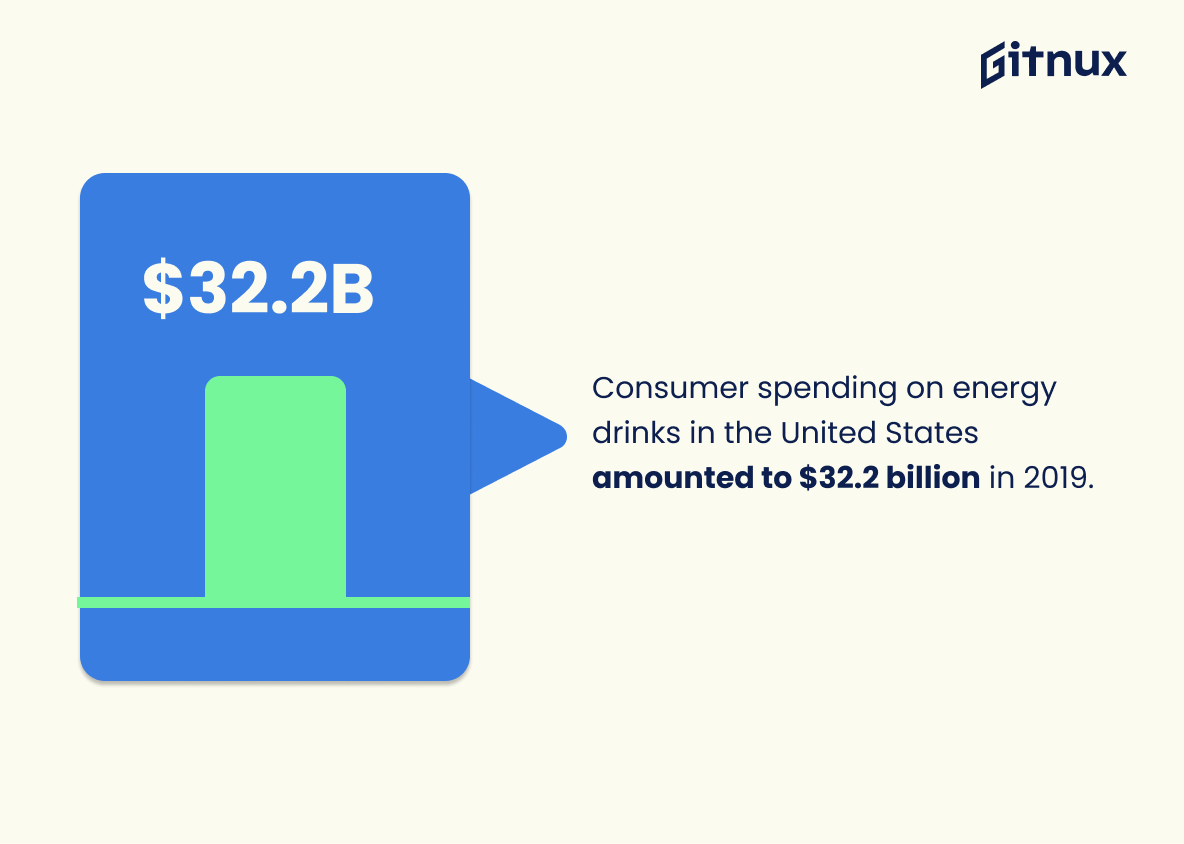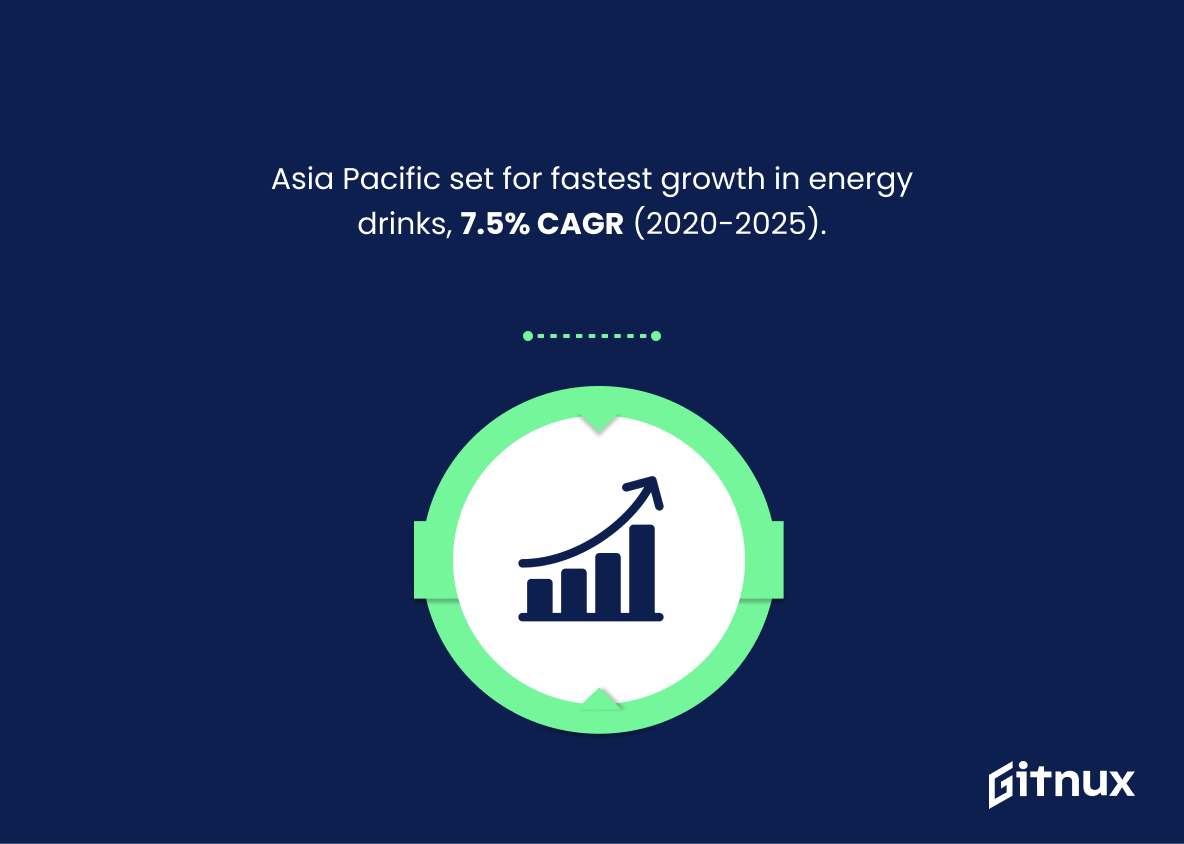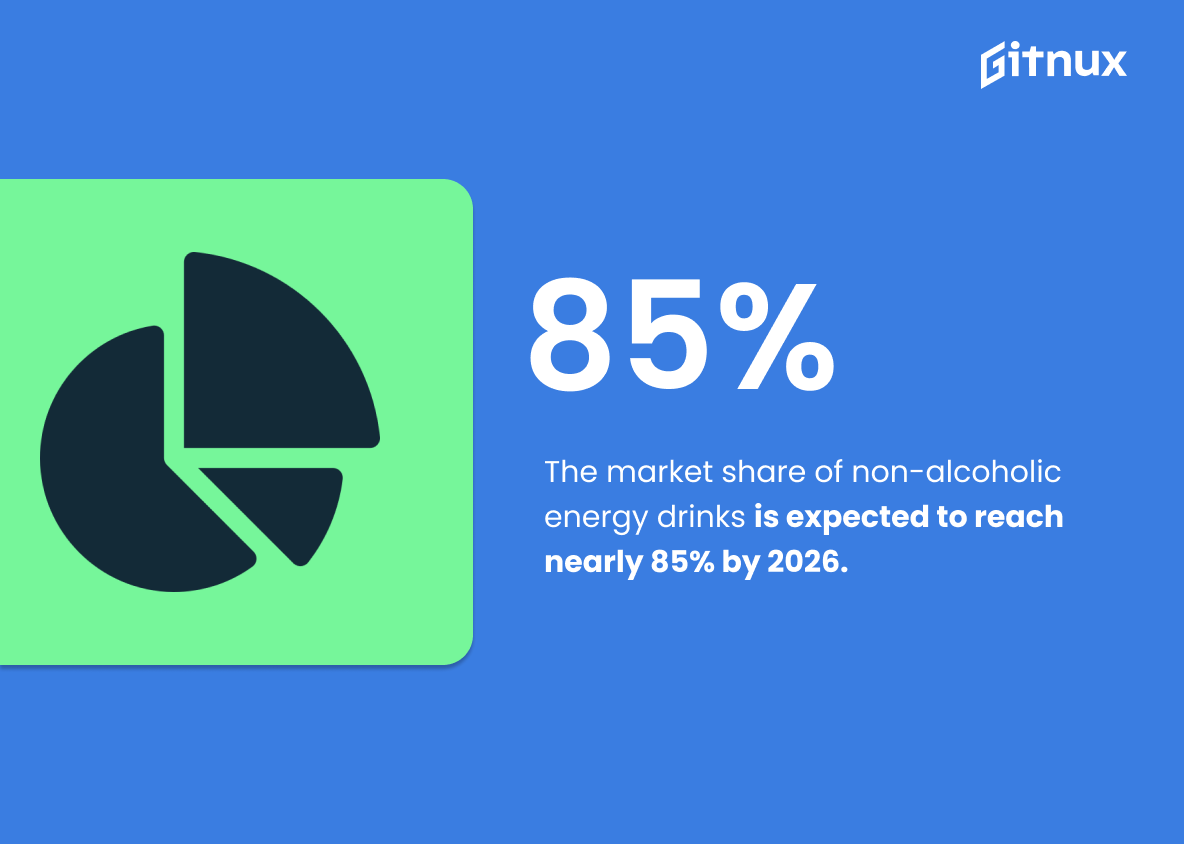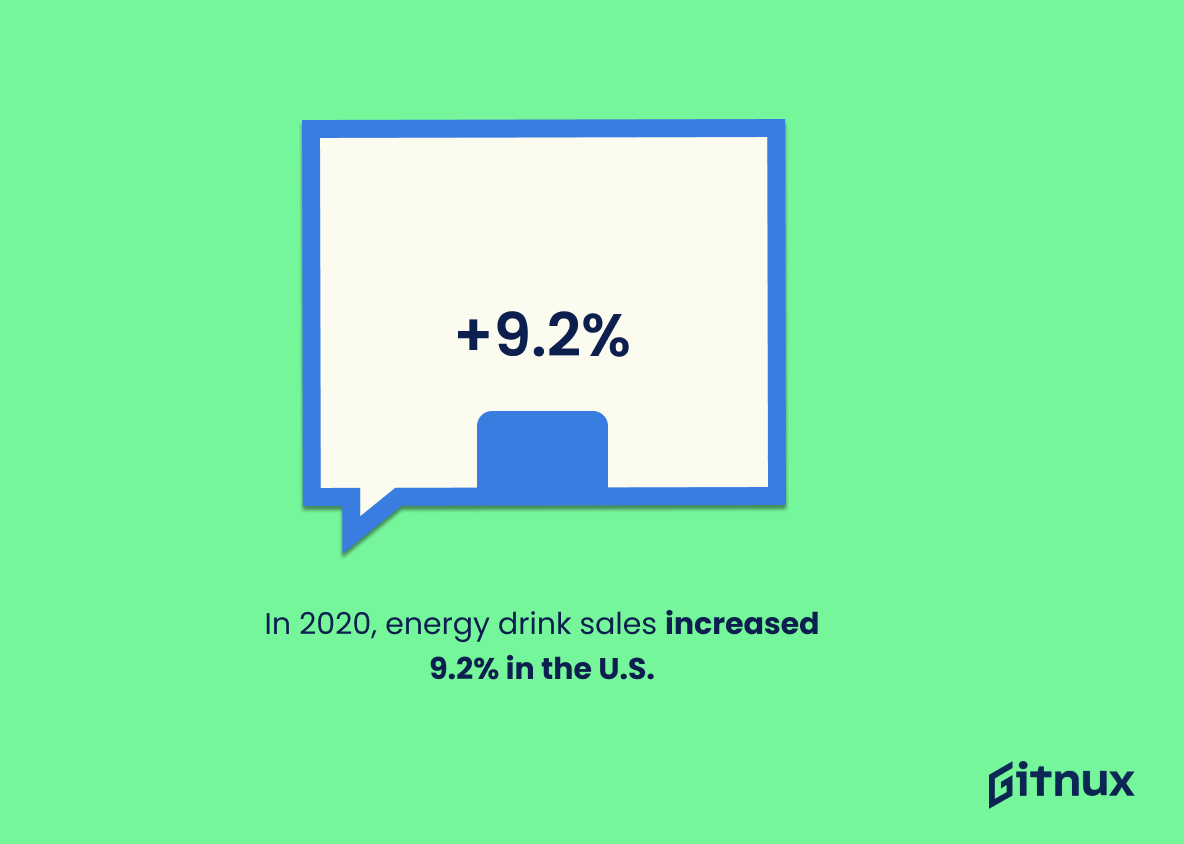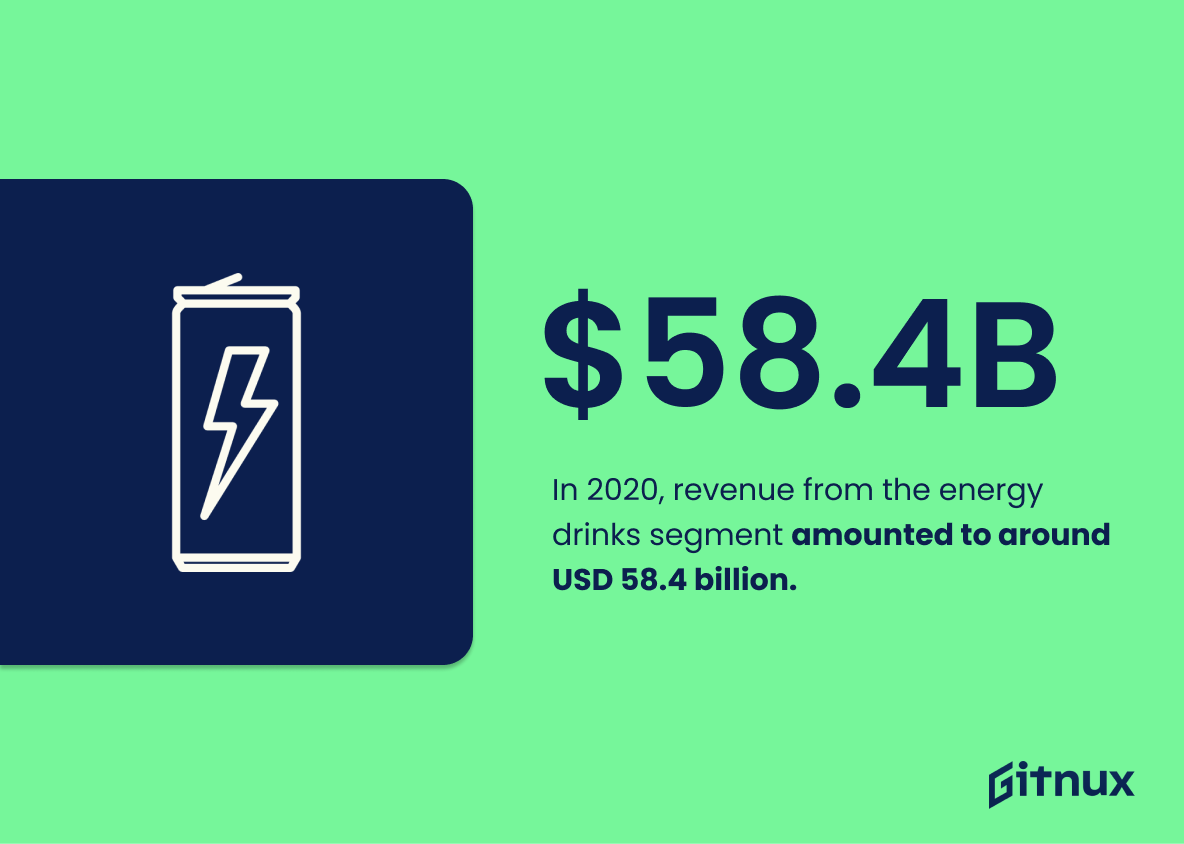The thriving Energy Drinks Industry has energized global discussions revolving around beverage consumption trends, health impacts, and market growth. Brimming with audacious marketing strategies and innovative products, this sector is skyrocketing at a phenomenal pace. This blog post aims to delve deep into the Energy Drinks Industry, uncovering crucial statistics, breaking down numbers behind market trends, and exploring consumer behavior. Whether you’re an entrepreneur, a health enthusiast, or an energy drink aficionado, these statistics will provide a comprehensive insight into the high-voltage world of energy beverages. Stay tuned as we crack open the facts and sift through the fizz to understand the real impact and immense potential of this booming industry.
The Latest Energy Drinks Industry Statistics Unveiled
The energy drinks market is projected to reach a value of USD 84.80 billion by 2026.
The projections of the energy drink market soaring to an impressive value of USD 84.80 billion by 2026 is the crescendo in the symphony of energy drinks industry statistics. This number, in all its grandeur, sets the stage for entrepreneurs, investors, and marketers to perceive the energy drink sector not only as an area of mammoth economic potential but also as a wellspring for innovation, competition, and consumer intrigue. Such a gargantuan forecast serves as a beacon, illuminating the path of significant growth potential, market adaptability and profitability for businesses within this sector.
The United States leads the global market for energy drinks, holding more than 35% of the market share.
This remarkable figure shines light on the monumental stature of the United States within the global energy drinks industry. A staggering 35% market share doesn’t just place the country at the forefront, it underscores America’s strategic role in driving industry trends, consumer preferences, and business innovation. This dominance provides crucial insights for market analysts, investors, and new entrants seeking to understand the landscape of this highly lucrative sector. With one eye on America’s approach, we can discern the path ahead, spot opportunities and predict potential challenges in the energy drinks market.
In 2019, Red Bull held a 43% share of the worldwide energy drink industry.
Diving deep into the effervescent world of energy drinks, one can’t overlook the colossal footprint of Red Bull in 2019. With its talons clutching 43% of the global market, this depicts Red Bull’s immense dominance in the energy drinks industry. For enthusiasts sifting through data, the numbers are certainly energizing. This majority stake held by Red Bull foregrounds its pervasive brand presence and massive consumer reach worldwide. So, as we dissect industry statistics, Red Bull’s market share emerges as a potent gauge of its empire in this fizz-filled industry, setting a high benchmark for competitors to leap towards.
Consumer spending on energy drinks in the United States amounted to $32.2 billion in 2019.
Highlighting the impressive $32.2 billion figure that American consumers spent on energy drinks in 2019 paints a vivid image of the dynamic nature and vast potential of the energy drinks industry. This sizeable economic footprint underscores the industry’s expansive growth, signaling a strong demand and rising consumption patterns. In the cogs of the financial machine, such figures offer a striking insight into consumer preferences and buying behaviors, while serving as a telling barometer for market trends, consumption shifts, and potential investment opportunities. It casts a spotlight on the pulsating heart of the energy drinks industry, its financial landscape, offering invaluable analytical perspectives. Valuable ground level insights like this, open doors to untapped market potential and strategizing differentiated product offerings for future growth for businesses in this sector. This figure also echoes the seemingly unstoppable energy this spirited industry wields within the realm of consumer spending.
The Asia Pacific region is expected to be the fastest-growing sector for energy drinks, with a CAGR of 7.5% from 2020 to 2025.
Unveiling the dynamism brewing in the Asia Pacific region, an anticipated CAGR of 7.5% for the energy drinks sector from 2020 to 2025 uncovers a vibrant marketplace. The region’s robust market acceleration illuminates a tapestry of opportunities for industry players. These numeric revelations open a window to future fortune for entrepreneurs and investors, underscoring the heightened potential of this region in the global narrative. So, in the high-energy ballet of drinks industry statistics, this rapid market growth makes the Asia Pacific a magnetic pole, attracting global attention towards this effervescent arena.
The market share of non-alcoholic energy drinks is expected to reach nearly 85% by 2026.
Undeniably, the projected skyrocket to an 85% market share for non-alcoholic energy drinks by 2026 underlines an intense, vibrantly dynamic trend within the energy drinks industry. In the discourse on this industry’s statistics in a blog post, such a prediction holds great weight with it illuminating potential economic and consumer patterns. It highlights a shifting cultural preference towards healthier, non-alcoholic options, evidencing a watershed moment in consumer behavior. Additionally, this forecast implicitly proposes exciting, lucrative opportunities for both established and budding entrants in the market, steering the direction and influencing the strategies industry players might adopt. Furthermore, it triggers critical thinking about the remaining market share, warranting examination of the possible factors for such a tilt in market dominance.
In 2020, energy drink sales increased 9.2% in the U.S.
Demonstrating the vitality within the realm of energy drinks, the emerging statistic pointing to a remarkable surge of 9.2% in energy drink sales within the U.S. in 2020 lends weight to the narrative about its flourishing industry. It spotlights an undeniably positive momentum in this segment, signaling strong consumer demand, possibly driven by increased awareness or lifestyle changes. Furthermore, it presents both an encouraging sign for investors and a ringing alert for competitors, underlining the expanding profitable opportunities and intensifying dynamics within the energy drinks market.
In the UK, sales of energy drinks increased by 185% between 2006 and 2015.
A meteoric rise of 185% in the sales of energy drinks in the UK between 2006 and 2015 is critical intel in the energy drinks industry statistics sphere. This dramatic swell suggests that the market’s thirst for energy drinks is burgeoning at a rapid pace, pointing to a potentially promising future for brands in this space. It’s a flashing neon sign that the energy drinks industry is on a growth trajectory and underscores the consumer trend gravitating towards such products. Without a doubt, this figure spotlights the energy drinks industry as a pivotal player in the UK beverage market.
Thailand is the biggest consumer of energy drinks in Southeast Asia.
Delving deeply into the expansive universe of the Energy Drinks Industry, one creation like a supernova, shines brighter than others – Thailand reigns supreme as the titan of energy drink consumption in Southeast Asia. This demonstrates how an influence as colossal as Thailand can architect market trends, drive economic opportunities and shape industry strategies in the high-octane landscape of energy drinks. A dominating force, Thailand’s proclivity towards energy drinks could serve as a benchmark for understanding consumer patterns, marketing tactics and future development potentials in this dynamic sector.
In 2020, it was estimated that 5.5 billion litres of energy drinks were consumed globally.
Dip your toes into this vast ocean of commercial indulgence, an impressive pool of 5.5 billion litres of energy drinks quenched worldwide in 2020 alone. Representing a tidal wave of information for anyone keen on the Energy Drinks Industry, these rippling numbers paint a picture of a dynamic and thriving global marketplace. Delving into the depths of this statistic, we unlock a Pandora’s box of market characteristics – global consumption trends, regional preferences and potential growth prospects, all swirling together to form a potent cocktail of insights and possibilities for entrepreneurs and investors. In a nutshell, this number isn’t just a figure, it’s the pulse of a rapidly evolving energy drink industry, pumping across geographies and demographics.
In 2020, revenue from the energy drinks segment amounted to around USD 58.4 billion.
Unveiling the magnitude of the energy drinks sector, one can’t overlook that in 2020 alone, a substantial monetary influx of approximately USD 58.4 billion was generated as revenue in this niche. This staggering figure serves as a testament to the surge in popularity and consumption of these vigor-boosting beverages. It paints a lucid picture of their widespread acceptance on a global scale, signifying their unshakeable stronghold within the beverage industry. Information like this doesn’t merely represent an economic triumph but is prominent in portraying the growth trajectory and prospective scope of the energy drinks market in future discussions.
Between 2021 and 2026, the energy drinks market is expected to grow at a CAGR of 7.1%.
Projecting the surge in the energy drinks market, swirling up by a CAGR of 7.1% between 2021 and 2026, throws a spotlight on the burgeoning popularity and demand in this sector. This upward trajectory can be regarded as a robust pulse check on the industry’s vitality, belying the prosperous potential for vendors, investors, and market players. It serves as a pivotal cornerstone that validates the market strength, emphasizing the burgeoning growth opportunities awaiting the industry in the next half-decade. In the blog post, this energetic leap forward in industry statistics paints a picture of potential booms in profitability, market participation, and product innovation unfolding on the horizon of the energy drinks landscape.
Conclusion
In the constantly evolving world of beverages, the energy drinks industry remains a significant player with promising potential. By analyzing various statistics, it’s clear that consumer preferences and lifestyles significantly influence this industry. Despite the challenges of health concerns and regulatory scrutiny, the growth trajectory of energy drinks industry proves it to be robust and resilient. Continued innovation, targeted marketing, and understanding of consumer needs are key aspects that will mold the industry’s future. Ultimately, the energy drinks industry isn’t just surviving, but thriving, proving that these energizing beverages are here to stay.
References
0. – https://www.www.statista.com
1. – https://www.www.bbc.com
2. – https://www.www.verifiedmarketresearch.com
3. – https://www.www.fortunebusinessinsights.com
4. – https://www.www.grandviewresearch.com
5. – https://www.www.bevindustry.com
6. – https://www.www.beveragedaily.com
7. – https://www.www.atlasandboots.com
8. – https://www.www.prnewswire.com
9. – https://www.www.globenewswire.com
